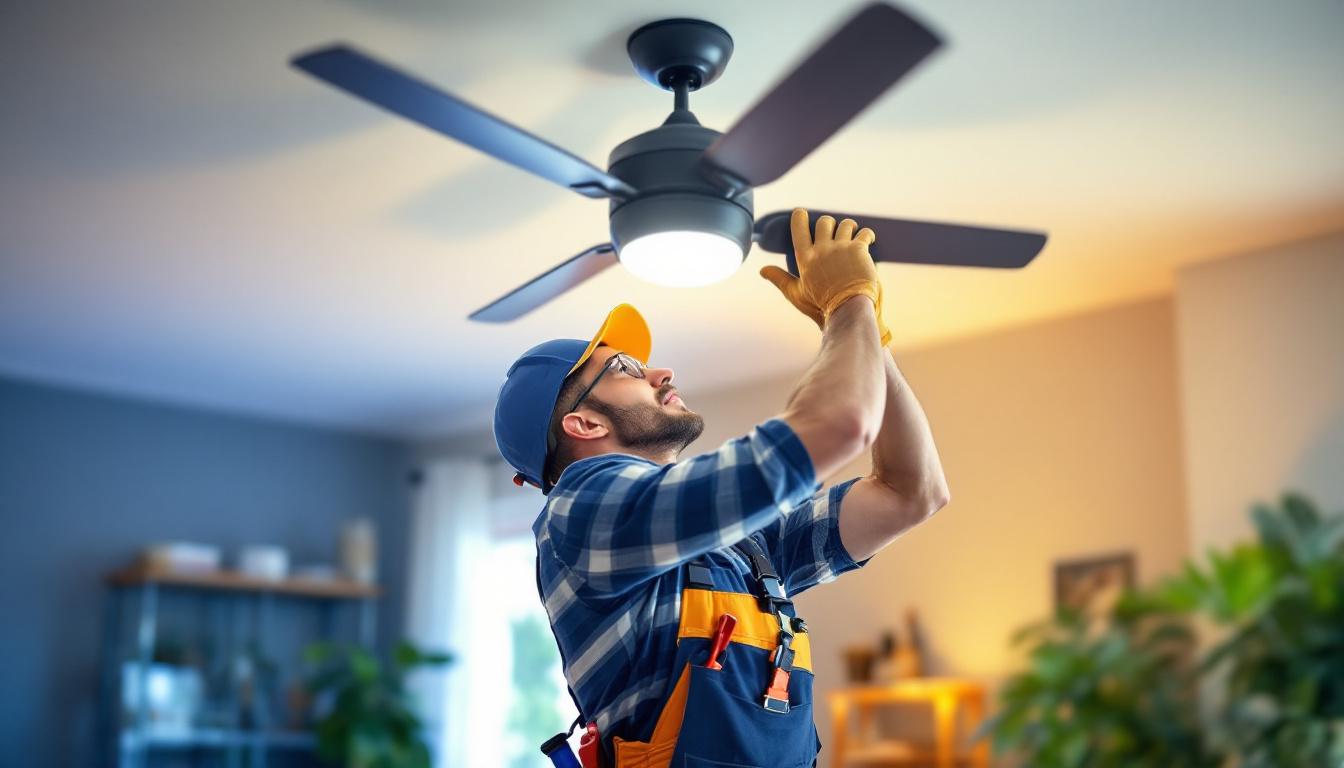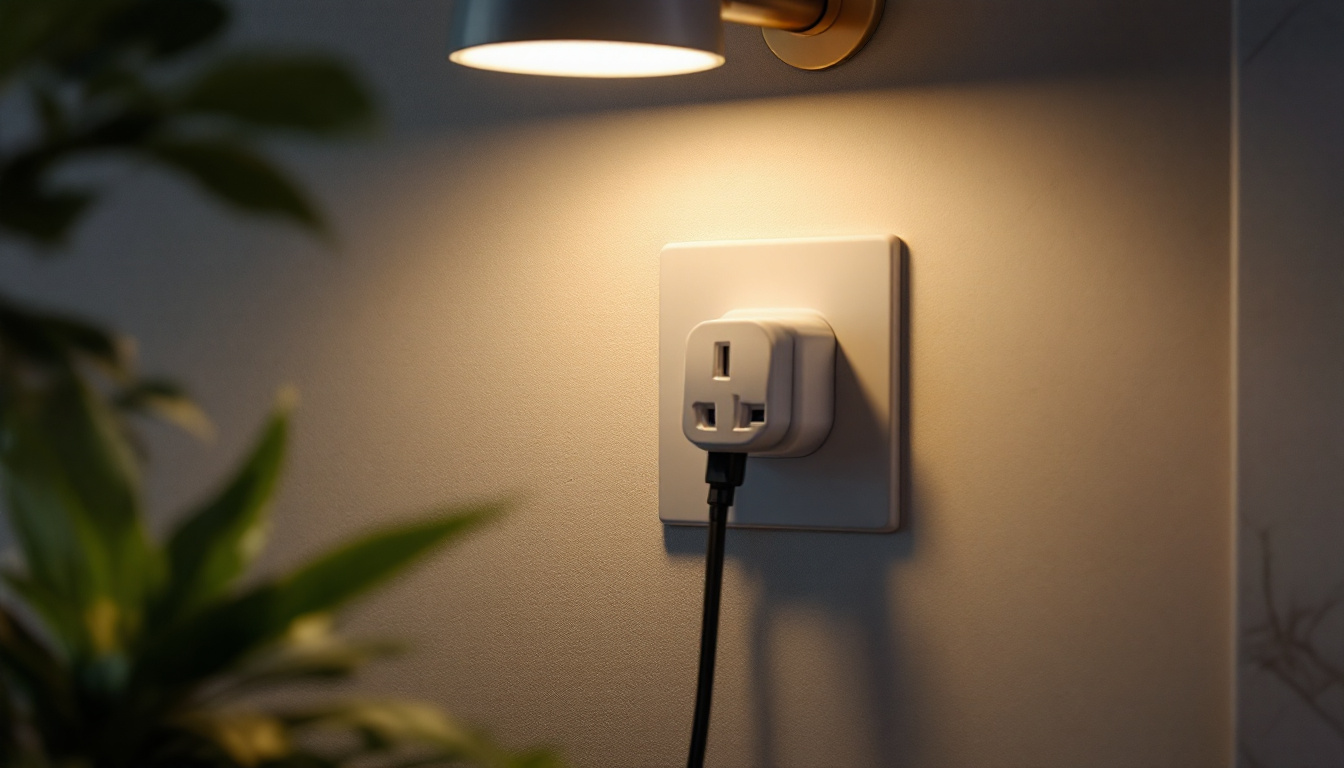
In the world of lighting installation and maintenance, fan replacement is a critical skill that every lighting contractor should master. Whether it’s for aesthetic enhancement, energy efficiency, or simply to keep up with technological advancements, understanding the nuances of fan replacement can significantly impact the quality of service provided to clients. This article explores essential tips and best practices for lighting contractors looking to refine their fan replacement techniques.
Before diving into the replacement process, it’s essential to familiarize oneself with the various types of fans available in the market. Each type serves different purposes and has unique installation requirements.
Ceiling fans are among the most common types used in residential and commercial settings. They are designed to circulate air, providing comfort and reducing the need for air conditioning. When replacing a ceiling fan, it’s vital to consider the fan’s size and style, as these factors can significantly influence the room’s overall aesthetic and functionality. Additionally, many modern ceiling fans come equipped with energy-efficient motors and smart technology, allowing for remote control operation and integration with home automation systems. This not only enhances convenience but also promotes energy savings, making them a wise choice for environmentally conscious consumers.
Exhaust fans are typically installed in kitchens and bathrooms to eliminate odors and moisture. When replacing these fans, it’s crucial to ensure that the new unit has adequate power to handle the volume of air that needs to be expelled. Additionally, proper ducting must be maintained to ensure efficiency and compliance with local building codes. Some advanced models even feature built-in sensors that detect humidity levels and automatically activate when needed, providing a seamless solution to maintaining air quality. Furthermore, selecting a fan with a quieter operation can significantly enhance the comfort of the space, especially in homes where noise levels are a concern.
Wall-mounted fans are often used in commercial spaces to improve air circulation. When replacing these fans, lighting contractors should pay attention to the mounting height and angle to ensure optimal airflow. It’s also important to check the electrical connections and ensure that the fan is compatible with the existing wiring. In addition, wall-mounted fans can be a stylish addition to a room, with various designs available that can complement the decor. Some models even come with oscillating features, allowing for a wider distribution of airflow, which can be particularly beneficial in larger areas where stationary fans might not suffice. Moreover, these fans can be an energy-efficient choice, especially in settings where central air conditioning is not feasible or practical.
Preparation is key to a successful fan replacement. This phase involves gathering the necessary tools and materials, as well as assessing the existing installation.
Before starting the replacement process, ensure that all required tools are at hand. Common tools include a screwdriver, pliers, wire cutters, and a voltage tester. Additionally, having the new fan and any necessary mounting hardware ready will streamline the process and minimize delays. It’s also wise to have a step ladder on hand, especially if the fan is mounted at a height that requires elevation for safe access. Consider wearing safety goggles and gloves to protect yourself from dust and debris that may accumulate around the fan area.
Before removing the old fan, it’s essential to assess the current installation. This includes checking the mounting bracket, electrical connections, and any potential obstructions. Understanding how the existing fan is installed will provide valuable insights into the replacement process and help avoid unexpected challenges. Take note of the type of wiring used; some fans may require specific wiring configurations or adapters for the new model. Additionally, inspect the ceiling or wall where the fan is mounted for any signs of wear or damage, as this could affect the stability and safety of the new fan installation. If the old fan has been in place for many years, it may also be beneficial to check for any signs of rust or corrosion on the mounting hardware, which could necessitate the replacement of those components as well.
Safety should always be a top priority when working with electrical components. Taking the necessary precautions can prevent accidents and ensure a smooth replacement process. Understanding the potential hazards associated with electrical work is crucial, as even minor oversights can lead to serious injuries or damage. By being diligent and prepared, you can create a safe working environment that minimizes risks and enhances efficiency.
Before beginning any work, always disconnect the power supply to the fan. This can usually be done at the circuit breaker. Use a voltage tester to confirm that the power is off before proceeding with the replacement. It’s also wise to place a warning sign on the breaker panel to alert others that work is being done. This simple step can prevent someone from inadvertently turning the power back on while you’re in the middle of your task, which could lead to severe electrical shock or injury.
Wearing appropriate personal protective equipment is essential. Safety goggles can protect the eyes from debris, while gloves can prevent cuts and scrapes. Additionally, a hard hat may be necessary if working in an area where falling objects are a risk. It’s also advisable to wear non-slip footwear to ensure stability on potentially slippery surfaces. Moreover, consider using hearing protection if you are working in a noisy environment, as prolonged exposure to loud sounds can lead to hearing loss over time. Ensuring that you are fully equipped with the right PPE not only safeguards your health but also boosts your confidence to work efficiently.
With preparation and safety measures in place, it’s time to dive into the actual replacement process. This section outlines the steps to effectively replace a fan.
Start by carefully removing the blades from the old fan, if applicable. This will make the unit lighter and easier to handle. Next, detach the fan from its mounting bracket and disconnect the wiring. Take care to note how the wires are connected, as this will be crucial for the installation of the new fan.
Once the old fan is removed, it’s time to install the new unit. Begin by securing the mounting bracket to the ceiling or wall, ensuring it is level and properly anchored. Next, connect the wiring according to the manufacturer’s instructions, ensuring that all connections are secure and insulated. Finally, attach the fan to the mounting bracket and reattach the blades.
After the installation is complete, it’s essential to test the new fan to ensure it operates correctly. This step is crucial for both functionality and client satisfaction.
Once everything is securely in place, restore power to the fan at the circuit breaker. Turn on the fan to check for proper operation. Listen for any unusual sounds, which could indicate installation issues, and ensure that the fan operates smoothly at all speed settings.
After confirming that the fan is functioning correctly, it’s a good practice to walk the client through the new installation. Explain how to operate the fan, including any remote controls or wall switches. This not only enhances client satisfaction but also builds trust and professionalism.
Proper maintenance can significantly extend the lifespan of a fan, making it essential for lighting contractors to educate clients on care practices.
Dust and debris can accumulate on fan blades, affecting performance and efficiency. Encourage clients to clean their fans regularly using a soft cloth or a duster. This simple task can prevent buildup and ensure optimal airflow.
Some fans may require periodic lubrication of the motor and moving parts. Advise clients to check the manufacturer’s recommendations for maintenance schedules. Additionally, periodic inspections can help identify any issues before they become significant problems.
Even experienced lighting contractors may encounter challenges during fan replacement. Understanding common issues and their solutions can help streamline the process.
One common challenge is dealing with incompatible wiring. Older homes may have different wiring standards, which can complicate the installation of modern fans. In such cases, it may be necessary to consult local electrical codes or hire a licensed electrician to ensure compliance and safety.
Noisy fans can be a significant concern for clients. If a newly installed fan is making excessive noise, it may be due to improper installation or misalignment. Ensuring that the fan is securely mounted and that all components are correctly aligned can help mitigate this issue.
The lighting and fan industry is constantly evolving, with new technologies and designs emerging regularly. Staying updated with these trends can help lighting contractors provide the best service to their clients.
Energy-efficient fans are becoming increasingly popular due to their cost-saving benefits and environmental impact. Familiarizing oneself with the latest energy-efficient models can provide clients with options that reduce their energy bills while enhancing comfort.
Smart fan technology is on the rise, allowing users to control their fans via smartphone apps or voice commands. Understanding how to install and integrate these systems can set a lighting contractor apart from the competition, providing added value to clients.
Mastering fan replacement is an invaluable skill for lighting contractors. By understanding the different types of fans, preparing adequately, ensuring safety, and following best practices during installation, contractors can deliver exceptional service to their clients. Additionally, staying informed about maintenance, common challenges, and industry trends will further enhance their expertise. With these tips in hand, lighting contractors can confidently tackle fan replacement projects, ensuring client satisfaction and long-lasting installations.
Ready to elevate your fan replacement services with the best tools in the trade? Look no further than LumenWholesale for all your lighting needs. Our extensive selection of spec-grade lighting products ensures you have access to the highest quality options for every installation. Say goodbye to local distributor markups and hello to unbeatable wholesale prices, free shipping, and the convenience of bulk buying. Enhance your expertise with reliable, high-performance lighting that won’t break the bank. Make the smart choice for your business and discover wholesale lighting at the best value today!

Discover how plug outlets are revolutionizing lighting design and installation, offering flexibility, efficiency, and aesthetic appeal.

Discover effective strategies for training your team in the use of commercial grow lights to maximize plant growth and productivity.

Discover how partnering with commercial grow light companies can give lighting contractors a competitive edge in securing more bids.

Discover the latest trends in dusk to dawn flood lighting that every lighting contractor needs to know.